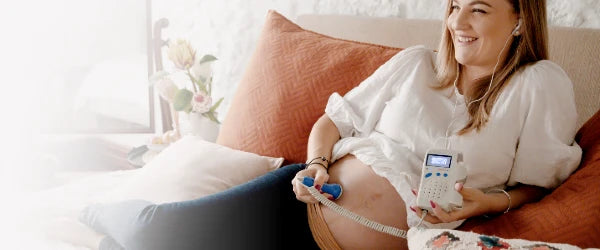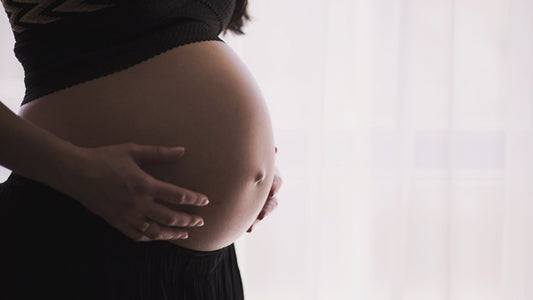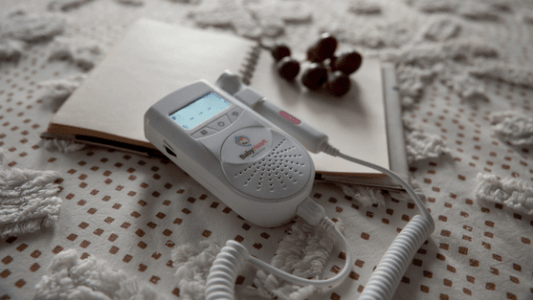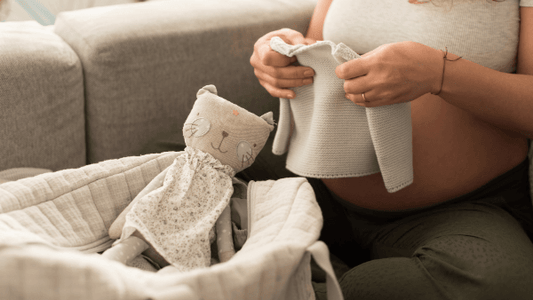
If you’re like many parents-to-be, you cherish every opportunity to get a glimpse of what your little one is doing in the womb.
From fluttering kicks that only mommy can feel, to the sight of them sucking their thumb during an ultrasound—there is plenty to ooh and aah about as you wait for your baby’s arrival. Not to mention how precious it is to listen to the heartbeat at home with your loved ones.
Your baby kicks, stretches, and punches; you might wonder what else he can do while still in the womb.
Thanks to scientific research, we can answer one of many questions you probably have—does my baby cry in there?
Yes, babies cry in the womb. But there is more to it than you think.
Why Babies Cry Inside the Womb
You might flinch at the thought of your baby crying.
You’ve heard the cautionary tales of newborns crying till they’re blue, but you can’t fathom why your unborn baby would cry.
Is my baby sad or in pain? What can I do about it?
The good news is that babies do not cry in the womb out of sadness or in response to pain. Research suggests that they are practising how to communicate after birth.
Crying is a survival mechanism. It is the only way your baby can let you know that he needs help, is distressed, or needs to be removed from an uncomfortable situation.
It makes sense for your little one to come to the world prepared to communicate.
Don’t worry about your baby crying in the womb. Think of it as rehearsals for cries that will surely get your attention once he’s born.
How To Know If Your Baby Is Crying Inside the Womb?

Source: Pexels
Can an unborn baby’s cries be heard from the mother’s belly?
No, fetuses cry without vocalising. Even if they made a sound, you wouldn’t hear it because of the amniotic fluid.
So, how did scientists determine that a fetus can cry? Researchers stumbled upon this finding while studying the effects of drug use in pregnancy.
When third-trimester fetuses were exposed to a soft sound played against the mother’s abdomen in a 2004 study, some appeared to cry.
The researchers observed several behaviours similar to what crying looks like outside the womb. In response to stimuli, the babies would:
- Open their mouths
- Depress their tongues
- Quiver their chins
- Take several irregular breaths
- Swallow
- Exhale before settling down
In addition to these, scientists have identified facial expressions that may indicate displeasure in unborn babies. One study found that babies can grimace in the womb.
From simple smiling to more complex eyebrow lowering and nose wrinkling, the study suggests that babies can make more complex expressions than we realise.
However, it is not clear to what extent the expressions are linked to feelings.
If you’re lucky, you might catch your baby smiling during an ultrasound. But it would be much harder to tell if he’s crying. This is because the behaviour observed in scientific studies was in response to direct and intentional stimuli.
What Does It Mean When Your Unborn Baby Cries?
Babies crying in the womb is a good thing. It indicates that your little one can:
- Recognise outside stimuli
- Process that the stimuli might be negative
- React to stimuli in multiple ways, including crying
Crying is a complex behaviour that requires the coordination of various motor systems. Along with other factors, it proves that your baby’s growth is adequate.
Crying Is Not the Only Way Babies Respond Inside the Womb
Building on the 2004 study, researchers define five states of fetal activity in the womb:
- Active awake
- Active state
- Crying
- Quiet sleep
- Quiet awake
In each state, fetuses show behaviours similar to those of a newborn. They respond to internal and external stimuli in fascinating ways.
Dreams
Just like newborns, fetuses spend most of their time sleeping. 85-90% of each day is spent in deep, rapid eye movement (REM) or intermediate sleep states.
During REM sleep, their eyes flutter just like adults’ do.
Scientists believe that while in this state of sleep, babies dream in the womb. They likely dream about sensations they feel in their mothers’ bellies and familiar sounds.
Movement
Your baby’s first muscle movements at nine weeks are involuntary and hardly noticeable. But, at 16-18 weeks of pregnancy, you’ll feel the gentle flutter of your little one’s kicks.
Your baby moves in response to sound and touch.
He’s extending his body, moving his head, clasping his feet, or reaching for his umbilical cord.
By week 37, your little one is so agile that he can grasp with his fingers.
Interestingly, ultrasounds have shown babies bounce up and down in the womb when their mothers laugh.
Studies on fetal psychology discovered other odd activities you wouldn’t imagine your unborn child is capable of:
- Yawning
- Swallowing
- Licking the uterine wall
- Walking around the womb by pushing off with their feet
The beauty is, whenever you feel your baby move, you can listen in with a BabyHeart fetal doppler. Listening to his heartbeat is a way to stay in touch; it makes it all feel so real.
Plus, your partner and close family get to enjoy the experience with you.

Is it Safe to Use a Fetal Doppler At Home?
Here’s what one of our customers says about the experience:
“Very happy with my purchase of the mini Doppler. I found it really easy to use and was able to find bubs heartbeat pretty quickly. I like to use it every couple of days just to lay back and listen to Bub. Sometimes it takes a bit of searching when Bub likes to hide but is amazing when I find it and can listen away. So happy I bought it.” - Dalena McNamara, Thargomindah, AU.
Learning and Memory
Your baby responds to sound, especially your voice. Several studies have shown that babies in the womb calm down when they hear their mother’s voice. After birth, they prefer familiar voices.
Although a loud noise may startle them, babies stop responding once the noise has been repeated several times. They listen, learn, and remember, knowing that the sound may not be as harmful as they thought.
Keep Up With Your Little One
Yes, your baby can cry in the womb.
No, it’s not a sign of distress.
Your baby is trying out all sorts of new skills that will help him survive when he’s born. You’ll soon get to hear those joyous cries that pique your curiosity.
At BabyHeart, we have a wide range of fetal dopplers to suit your needs and budget. Choose from the:
- Easy-to-use mini doppler
- Battery-powered standard doppler
- Rechargeable advanced doppler
- Premium doppler with a heart-rhythm display
Disclaimer: Our product is not a Therapeutic Good or a Medical Device, use it as a Lifestyle Tool
Featured Image: Pixabay by Free-Photos

 Order today and receive a complimentary, large 250mL Gel valued at $19.99!
Order today and receive a complimentary, large 250mL Gel valued at $19.99!


